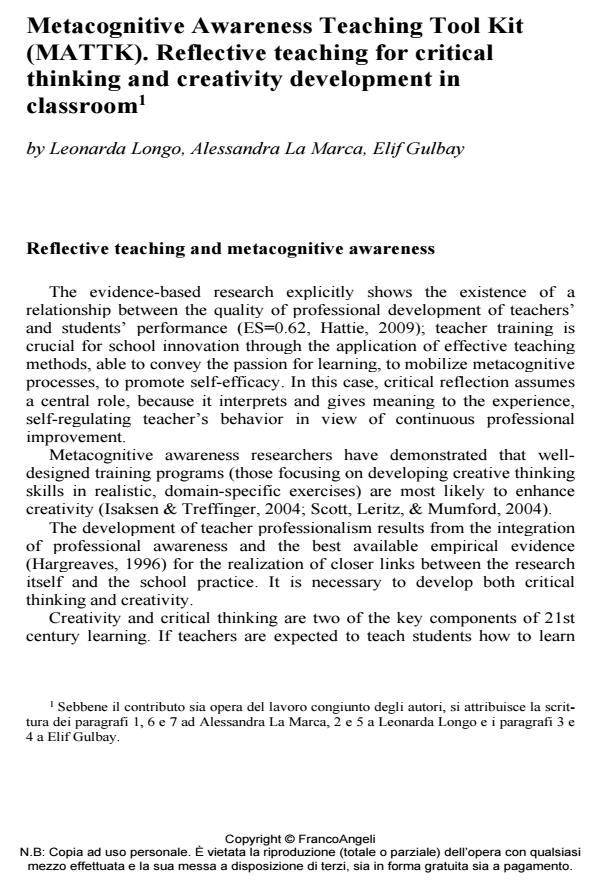Metacognitive Awareness Teaching Tool Kit (MATTK). Reflective teaching for critical thinking and creativity development in classroom
Journal title EDUCATIONAL REFLECTIVE PRACTICES
Author/s Longo Leonarda, Alessandra la Marca, Elif Gulbay
Publishing Year 2016 Issue 2016/2
Language Italian Pages 0 P. 175-194 File size 257 KB
DOI 10.3280/ERP2016-002012
DOI is like a bar code for intellectual property: to have more infomation
click here
Below, you can see the article first page
If you want to buy this article in PDF format, you can do it, following the instructions to buy download credits

FrancoAngeli is member of Publishers International Linking Association, Inc (PILA), a not-for-profit association which run the CrossRef service enabling links to and from online scholarly content.
Situation awareness has long been recognized as an important variable in teacher performance. Research to date has focused on identifying characteristics of situation awareness for individuals, not on the behaviors and processes associated with situation awareness. The purpose of this review is to delineate and identify characteristics of teacher metacognitive awareness. In addition, implications are discussed and research questions are outlined that target the measurement and training of situation awareness. The research has examined the positive correlation between the meta cognitive awareness of teachers and the development of two soft skills (critical thinking and creativity) in students. The study involved 846 volunteer Sicilian teachers. Within this contribution, we present as a research result, the "MAT Tool Kit", a tool for reflective teaching which consists of six stages and aims at fostering meta cognitive awareness in teachers. These stages are based on a class-based inquiry approach which stems from the widely used "plan-do-review" cycle
Longo Leonarda, Alessandra la Marca, Elif Gulbay, Metacognitive Awareness Teaching Tool Kit (MATTK). Reflective teaching for critical thinking and creativity development in classroom in "EDUCATIONAL REFLECTIVE PRACTICES" 2/2016, pp 175-194, DOI: 10.3280/ERP2016-002012